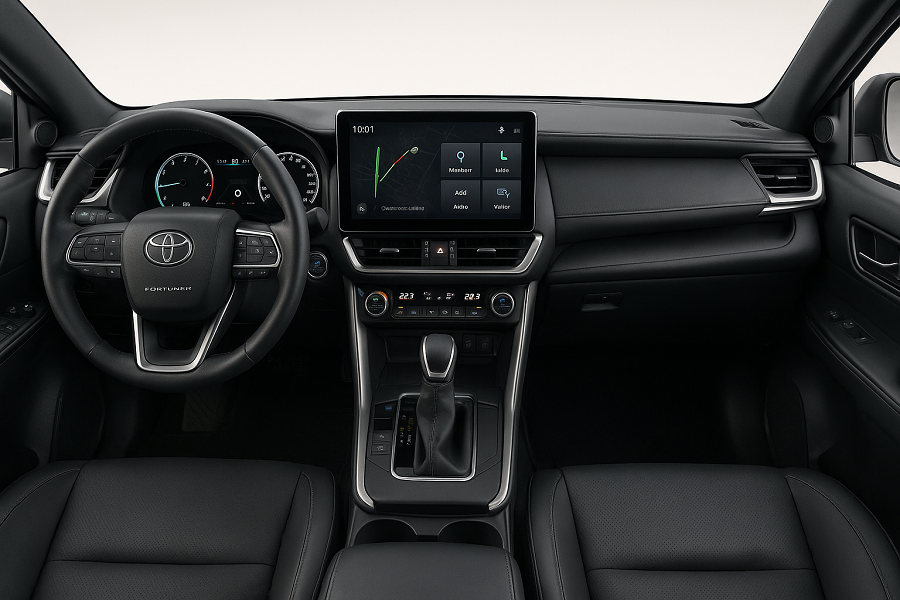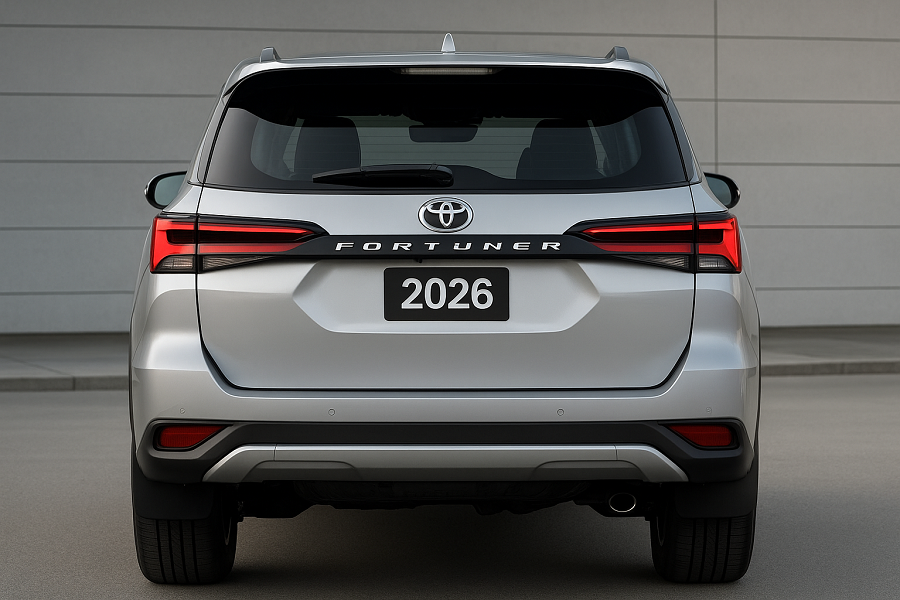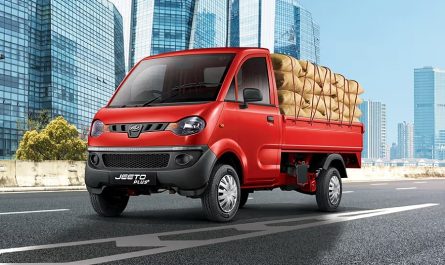The Toyota Fortuner 2026 is set to redefine what midsize SUVs can offer, blending rugged capability, modern technology, and family-friendly practicality. As one of the most anticipated releases in the Toyota SUV lineup, the new Fortuner builds on its storied legacy while introducing bold updates to compete in the highly competitive SUV market.
Whether you’re a car enthusiast, an off-road adventurer, or a family looking for the best SUV 2026, this comprehensive guide dives into everything you need to know about the new Toyota Fortuner, including its design, performance, technology, and how it stacks up against rivals like the Ford Everest and Mitsubishi Pajero Sport.We’ll also weave in key insights about the Toyota Sequoia, Toyota’s full-size SUV, to provide context on how Toyota’s SUV portfolio caters to diverse needs, ensuring you have a complete picture of the brand’s offerings.
A Legacy of Strength: The Toyota Fortuner’s Evolution
The Toyota Fortuner, also known as the SW4 in some markets, has been a staple in the midsize SUV segment since its debut in 2004. Built on the robust Toyota Hilux platform as part of Toyota’s IMV (Innovative International Multi-purpose Vehicle) project, the Fortuner was designed for emerging markets but quickly gained global appeal. Its combination of durability, off-road prowess, and versatility has made it a favorite in regions like Southeast Asia, Australia, India, and the Middle East.
From Humble Beginnings to Global Icon
- First Generation (2004–2015): Launched with a focus on ruggedness, the first Fortuner offered petrol and diesel engines, with 4×2 and 4×4 configurations. Its boxy design and body-on-frame construction made it a go-to for off-road enthusiasts.
- Second Generation (2015–Present): The 2015 model introduced a sleeker design, improved interior quality, and modern tech like touchscreen infotainment. Facelifts in 2020 and 2021 added sharper styling, enhanced safety, and mild-hybrid options in select markets.
- 2026 Outlook: The new Toyota Fortuner is expected to be a significant evolution, potentially adopting a refined IMV platform or even the TNGA-F architecture used in larger Toyota SUVs like the Toyota Sequoia, signaling a leap in refinement and capability.
Toyota’s SUV Legacy: Where the Sequoia Fits
While the Fortuner caters to the midsize SUV segment, the Toyota Sequoia represents Toyota’s flagship full-size SUV, primarily designed for North America. Launched in 2000, the Sequoia has carved a niche for buyers needing maximum space, towing capacity, and luxury. Its third-generation model, introduced in 2022, brought a hybrid powertrain and cutting-edge tech, positioning it as a premium alternative to the Fortuner. While the Fortuner excels in markets requiring compact yet capable SUVs, the Sequoia targets those needing a larger, more powerful vehicle for heavy-duty tasks.
Toyota Fortuner 2026: What to Expect
The Toyota Fortuner 2026 is poised to elevate its game with a bold redesign, advanced technology, and enhanced performance. Here’s a detailed look at what’s coming.
Exterior Design: A Modern, Muscular Look
The new Toyota Fortuner is expected to feature a tougher, more contemporary design to stand out in the crowded SUV market. Drawing inspiration from recent Toyota models like the Land Cruiser and Sequoia, the Fortuner’s exterior will likely include:
- Sleek LED Headlights: Slimline LED headlights with integrated DRLs for a sharp, futuristic appearance.
- Bold Grille: A larger, chrome-accented front grille, possibly with a “shark-nose” design, enhancing its commanding road presence.
- Refined Bumpers: Redesigned front and rear bumpers with silver skid plates for a rugged yet premium aesthetic.
- Alloy Wheels: Up to 18-inch multi-layered alloy wheels, with higher trims like the GR Sport possibly featuring unique designs.
- Color Options: A range of vibrant shades, including dual-tone options with a black roof, as seen in the Fortuner Legender.
This modernized look ensures the Fortuner appeals to both urban buyers and off-road adventurers, maintaining its muscular stance while embracing Toyota’s global design language.
Interior: Comfort Meets Functionality
The Toyota Fortuner 2026 interior is expected to take a significant step up in quality and technology, offering a blend of practicality and luxury. Unlike its Hilux roots, the Fortuner has evolved to offer a distinct cabin experience. Key highlights include:
- Premium Materials: Expect synthetic leather upholstery with contrast stitching, soft-touch surfaces, and wood or metallic accents in higher trims like the Crusade or GR Sport.
- Seating Configuration: A 2-3-2 layout with seven seats, featuring a one-touch tumble second row and foldable third row for flexible cargo space.
- Space and Comfort: The second row offers decent legroom, though the third row is best suited for children or short trips. The Sequoia, by contrast, provides more spacious third-row seating for adults, catering to larger families.
- Storage Solutions: Ample door pockets, cup holders, and a center console box, though boot space is limited with all seats up. Folding the third row significantly expands cargo capacity.
The Fortuner’s interior balances durability for off-road use with enough refinement to rival competitors like the Ford Everest.

Technology: Staying Connected and Informed
The Toyota Fortuner 2026 is expected to integrate cutting-edge technology to keep pace with modern SUV expectations:
- Infotainment System: An 8- or 9-inch touchscreen with wireless Apple CarPlay, Android Auto, and Toyota Connected Services for real-time diagnostics and navigation.
- Digital Cluster: A 4.2-inch or larger color TFT driver display, offering key information like fuel economy and off-road metrics.
- Audio Experience: A six-speaker system, with premium trims possibly featuring a JBL audio upgrade, similar to what’s offered in the Sequoia.
- Convenience Features: Wireless charging, automatic climate control with rear vents, and a 360-degree camera for easier parking.
The Sequoia, as a full-size SUV, takes tech a step further with a standard 14-inch touchscreen and a 12.3-inch digital gauge cluster in higher trims, catering to buyers seeking a more upscale experience.
Engine Specs and Performance
The Toyota Fortuner 2026 will likely carry forward its proven powertrains while introducing new options to enhance efficiency and performance:
- 2.8L Turbo-Diesel (1GD-FTV): Producing around 201 hp and 500 Nm of torque, this engine is paired with a 6-speed automatic or manual transmission. A 48-volt mild-hybrid system (Neo Drive) is expected to improve fuel economy and reduce emissions, as seen in 2025 models.
- 2.4L Turbo-Diesel (2GD-FTV): Available in base trims, offering 148 hp and 400 Nm, primarily for 4×2 configurations.
- Potential Hybrid: Rumors suggest a 2.4L turbo-petrol hybrid (273 kW/550 Nm) similar to the Land Cruiser Prado or Lexus RX, though unconfirmed.
- 4×4 Capability: Higher trims will feature a switchable 4×4 system with low-range gearing, ideal for off-road adventures.
The Toyota Sequoia, by comparison, relies on a standard 3.5L V6 i-FORCE MAX hybrid powertrain, delivering 437 hp and 790 Nm of torque. This hybrid setup, paired with a 10-speed automatic, prioritizes power and towing (up to 9,520 lbs), making it ideal for heavy-duty tasks but less fuel-efficient than the Fortuner’s diesel options.
Off-Road Capability: Built for Adventure
The Fortuner’s off-road prowess is a cornerstone of its appeal, and the Toyota Fortuner 2026 is expected to enhance this legacy:
- Chassis: Likely built on an updated IMV platform, with rumors of a TNGA-F adoption for improved rigidity and refinement.
- Suspension: Double wishbone front and five-link rear suspension with coil springs for better ride comfort compared to the Hilux’s leaf springs.
- Off-Road Features: Rear differential lock, hill start assist, downhill assist control (GXL and Crusade trims), and a snorkel option for dusty environments.
- Ground Clearance: Approximately 279 mm, ensuring excellent obstacle clearance.
The Sequoia, while also off-road capable, leans more toward on-road comfort with its TNGA-F platform and adaptive suspension in higher trims. Its larger size and weight make it less agile on tight trails compared to the Fortuner but better suited for long-distance towing and overlanding.
Safety Features: Toyota Safety Sense and More
Safety is a priority for the Toyota Fortuner 2026, with an expected suite of advanced driver-assistance systems (ADAS):
- Toyota Safety Sense: Likely to include adaptive cruise control, lane departure warning, automatic emergency braking, and blind-spot monitoring.
- Standard Safety: Seven airbags, ABS with EBD, vehicle stability control, traction control, and a 360-degree camera.
- Crash Test Ratings: The current Fortuner holds a 5-star NCAP rating in some markets, and the 2026 model is expected to maintain or improve this.
The Sequoia also features Toyota Safety Sense 2.5 or 3.0, with additional features like pedestrian detection and rear cross-traffic alert, reflecting its premium positioning. Both SUVs prioritize safety, but the Sequoia’s larger size allows for more robust structural protection.
Pricing and Variants
The Toyota Fortuner price 2026 will vary by market and trim level, with an expected starting range of $45,000–$66,000 (USD equivalent) based on current trends:
- GX (Base): Around $45,000–$50,000, with 2.4L diesel, 4×2, and basic features like 17-inch wheels and cloth seats.
- GXL (Mid-Tier): Approximately $55,000, adding 4×4, 18-inch alloys, and enhanced infotainment.
- Crusade/GR Sport/Legender: Topping out at $60,000–$66,000, with premium upholstery, 360-degree camera, and mild-hybrid tech.
- Neo Drive 48V: Mild-hybrid variants may command a $2,000–$3,000 premium.
The Toyota Sequoia, as a full-size SUV, starts at around $61,000 for the SR5 trim and can exceed $80,000 for the Capstone trim. Its higher price reflects its larger size, hybrid powertrain, and luxury features like heated/ventilated seats and a panoramic sunroof.
Market Positioning: Who Is the Fortuner For?
The Toyota Fortuner 2026 targets buyers seeking a versatile midsize SUV that excels in both urban and off-road environments. Its key strengths include:
- Family-Friendly Appeal: Seven seats and flexible cargo space make it ideal for families.
- Off-Road Enthusiasts: Robust 4×4 systems and high ground clearance cater to adventurers.
- Value Proposition: Competitive pricing and Toyota’s reputation for reliability make it a practical choice compared to pricier German SUVs.
In contrast, the Sequoia appeals to buyers needing a full-size SUV for towing, long-distance travel, or larger families. Its hybrid powertrain and premium features position it as a competitor to the Chevrolet Tahoe and Ford Expedition, while the Fortuner battles midsize rivals.
Competitive Analysis: Fortuner vs. Ford Everest, Pajero Sport, and More
The midsize SUV segment is fiercely competitive, with the Toyota Fortuner 2026 facing off against strong contenders like the Ford Everest, Mitsubishi Pajero Sport, Isuzu MU-X, and emerging players like the GWM Tank 300. Here’s how it stacks up based on 2026 expectations.
Ford Everest
- Strengths: The Everest offers a refined ride, powerful Bi-Turbo diesel (184 kW/600 Nm), and a modern interior with a 12-inch touchscreen. Its TNGA-F-like platform provides superior on-road dynamics.
- Weaknesses: Higher starting price (around $50,000–$70,000) and less brand loyalty in some markets compared to Toyota.
- Fortuner Advantage: The Fortuner’s lower price, mild-hybrid option, and proven off-road capability make it a strong value proposition.
Mitsubishi Pajero Sport
- Strengths: Priced slightly lower (starting at ~$49,000), the Pajero Sport offers a comfortable ride with coil-spring suspension and a 2.4L diesel (181 hp). It’s narrower, which may suit smaller families.
- Weaknesses: Less spacious cabin and dated tech compared to the Fortuner’s expected 2026 updates.
- Fortuner Advantage: Wider cabin, more powerful 2.8L diesel, and Toyota’s reliability edge.
Isuzu MU-X
- Strengths: Refreshed for 2025 with competitive pricing (~$47,000–$60,000) and strong off-road capability. Its 3.0L diesel offers 140 kW and 450 Nm.
- Weaknesses: Less premium interior and fewer advanced tech features compared to the Fortuner.
- Fortuner Advantage: Superior brand reputation, mild-hybrid efficiency, and a more modern design.
GWM Tank 300
- Strengths: Affordable pricing (~$40,000) and a rugged design with hybrid options make it a disruptor.
- Weaknesses: Less established brand and unproven long-term reliability.
- Fortuner Advantage: Toyota’s trusted durability and extensive dealer network.
The Toyota Fortuner 2026 holds a strong position thanks to its blend of affordability, off-road capability, and Toyota’s reliability reputation. However, rivals like the Everest offer more refinement, pushing Toyota to elevate the Fortuner’s tech and comfort.

Comparing Fortuner and Sequoia for Buyers
While the Toyota Fortuner 2026 and Toyota Sequoia serve different segments, they share Toyota’s commitment to durability and versatility. Here’s how they align for buyers:
- Size and Purpose: The Fortuner (4.8m long) is ideal for midsize SUV buyers needing agility and affordability, while the Sequoia (5.2m long) caters to those requiring maximum space and towing capacity.
- Powertrains: The Fortuner’s diesel and mild-hybrid options prioritize efficiency, while the Sequoia’s V6 hybrid delivers raw power for heavy loads.
- Market Focus: The Fortuner dominates in Asia, Australia, and the Middle East, while the Sequoia is a North American staple, offering a premium alternative to the Fortuner’s rugged utility.
Buyers choosing between the two should consider their needs: the Fortuner for versatile, budget-friendly off-roading, and the Sequoia for luxury and heavy-duty tasks.
Why the Toyota Fortuner 2026 Stands Out
The Toyota Fortuner 2026 is more than just an SUV—it’s a statement of capability, reliability, and style. Its blend of modern design, advanced technology, and proven off-road performance makes it a top contender in the best SUV 2026 category. Whether you’re navigating city streets, tackling rugged trails, or hauling the family, the Fortuner delivers.
Key Reasons to Consider the Fortuner
- Versatility: Seven seats, flexible cargo space, and 4×4 options cater to diverse lifestyles.
- Reliability: Toyota’s legendary durability ensures long-term value, unlike pricier German SUVs with higher maintenance costs.
- Value for Money: Competitive pricing and low ownership costs make it a practical choice.
- Off-Road Prowess: With features like rear differential lock and high ground clearance, it’s built for adventure.
For those needing a larger, more luxurious option, the Toyota Sequoia offers a compelling alternative within Toyota’s SUV lineup, with its hybrid powertrain and premium features catering to full-size SUV buyers.
Conclusion: Is the Toyota Fortuner 2026 Right for You?
The Toyota Fortuner 2026 is shaping up to be a powerhouse in the midsize SUV segment, combining a bold new design, advanced technology, and unmatched off-road capability. With its mild-hybrid options, enhanced safety features, and competitive pricing, it’s poised to challenge rivals like the Ford Everest and Mitsubishi Pajero Sport while maintaining Toyota’s reputation for reliability. For buyers seeking a larger, more premium SUV, the Toyota Sequoia offers a complementary option with its hybrid powertrain and spacious interior, ensuring Toyota’s SUV lineup has something for everyone.


